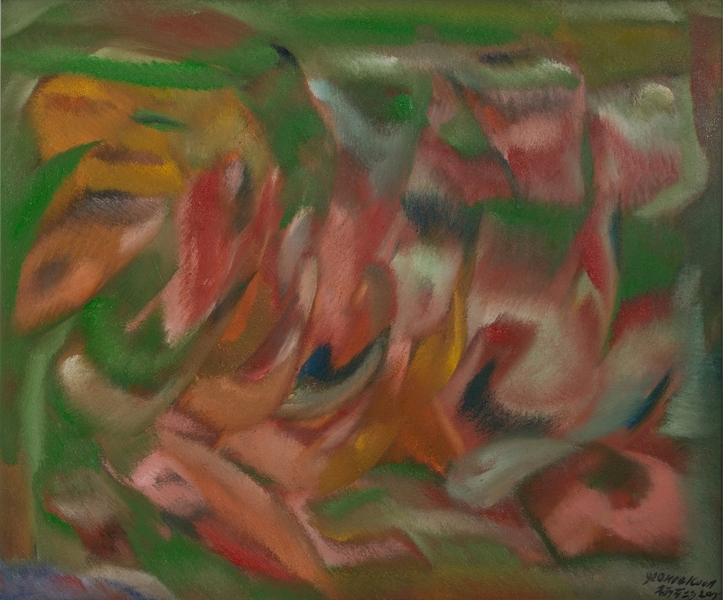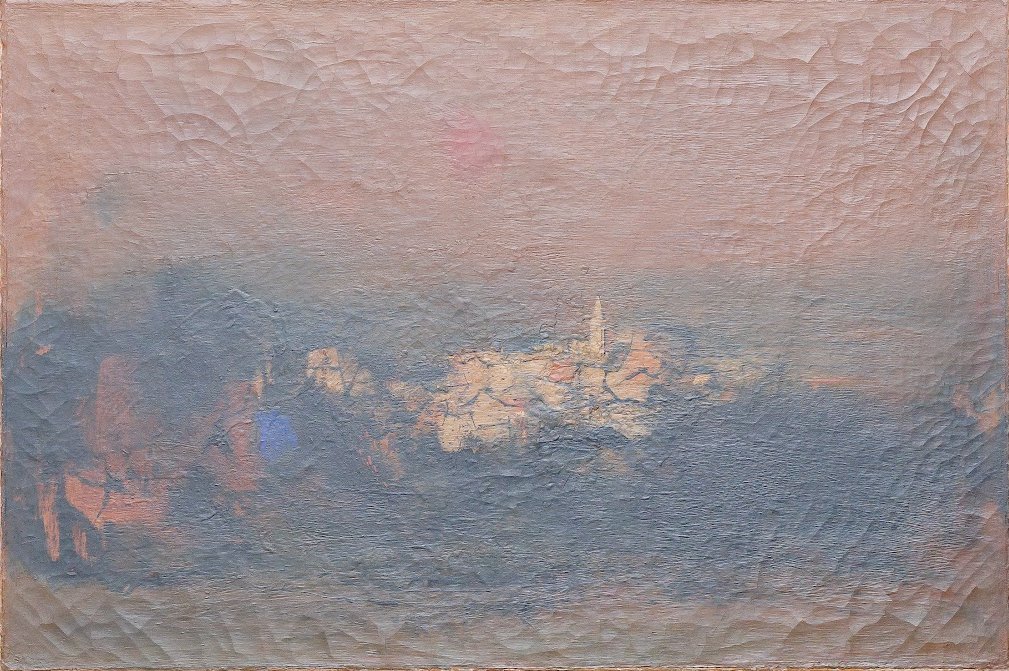Acrylic Painting on Canvas Team Bonding Art Jamming Singapore Visual Arts Centre
























Yeo Hoe Koon
Oil on Canvas
64 x 89.5 cm
Price Range: $16,000 - $20,000

Yeo Hoe Koon
Oil on Canvas
101 x 123 cm
Price Range: $26,000 - $32,000

Chen Wen Hsi
Chinese Ink and Color on Paper
50 x 54cm
Price Range: SGD $42,000 - $50,000

Cheong Soo Pieng
Red Tone
61 x 91.5cm
Price Range: SGD $108,000 - $138,000

Cheong Soo Pieng
Abstract Landscape
50 x 61cm
Price Range: SGD $95,000 -$128,000

Fan Shao Hua
Chinese Ink and Colour on Paper
100 x 100cm
Price Range: SGD $9,800 - $14,800

Fan Shao Hua
Chinese Ink and Colour on Paper
100 x 100cm
Price Range: SGD $8,800 - $13,800



Fan Shao Hua’s interest in art began at a very young age. his father was conversant in both Chinese calligraphy and painting, and painted in the Lingnan style. During his early education, his art teachers also influenced him greatly. That led to his admission into the Guangzhou academy of Fine art in 1981 where he was trained in Western paintings.

When Shao Hua was pursuing his university education, renowned second-generation Lingnan-style artists such as Guan Shan-Ye and Li Xiong-Chai were leading professors in the Chinese art Department in the Guangzhou Fine arts academy. As a result of these multiple influences, Shao Hua is also very familiar with the Lingnan style of Chinese paintings. Shao Hua graduated in 1985 with a Fine arts degree with strong foundation in Realism technique.

In his Southeast Asian themes, he painted sceneries of Singapore, Malay kampungs and Balinese landscapes, bringing to life these regional vignettes in his vigorous style which still preserves the finesse and detail of his subject matter. The largeness of spirit and expression typical of the Shanghai School can be seen in his classical themed paintings of birds and flowers. But Ling went beyond the traditions in which he was schooled, incorporating increasingly abstract qualities in his work. By the 1990s, his work in the landscape genre had included the usage of acrylic paints, making him stand out as a modern Chinese painter of the times.

Fan Shao Hua’s realistic works shows his keen sense of observation and thoughtful interpretation what he observed. coupled with his ability to draw and paint with accuracy and detail, he puts on his canvas captivating stories that goes beyond aesthetics.
In his portraiture works, his strong ability to depict human anatomy is evident. He is also able to portray the subject’s character well. This enables his portraitures to go beyond the mere representation of his models’ facial features.
It also allows the audience to assess the character of his models and appreciate their emotions. In both his portraiture works and his paintings of daily living, he pays careful attention to light and shadow, showcasing the three-dimensionality of his works.
Shao Hua’s realist works include the trivialities of daily living, the behaviour of culture and relationships between human. His paintings go beyond being a feast to the eyes, one can be emotionally involved in the world that he depicts and interprets.
Shao Hua’s Lotus paintings are not meant to be mere visual recording of flora beauty in different poses. They reveal or speak about the inner needs to an individual and of mankind. The contradiction between beauty and mud ; serenity and muck, are reflective of the chaotic reality in mankind – the search for a solution requires more than just fixing the materialistic reality. There is a realm of the soul and the spirit that has often been neglected and needs urgent fixing.
Dr Fan graduated from Guangzhou Art Academy and completed MA at Royal Melbourne Institute of Technology in Australia and received Ph.D. in Research of Fine Arts at Nanyang Technological University of Singapore.
He held numerous solo exhibitions both locally and overseas such as at Guangdong Art Museum, Shanghai Art Museum, National Art Museum, Guancheng Art Museum and Hong Kong City Hall in China, Taiwan, Korea and Paris.
He received Grand Prize, UOB Competition (2000); Premium Oil Painting Artist Award, Hong Kong World Class Artist Committee (2008); Excellent Award in oil painting, “Tang Shan Grandfather” selected by the International Artists, an American magazine (2007); International Culture Art Fair Award, Korea (2007); Excellent Award “Qiu Qu” selected by the International Artist, an American magazine (2006); Philip Morris ASEAN Art Award for Ink painting (2001); and “Journey”, a ink painting selected as one of the top five entries that represent Singapore in the Winsor and Newton Drawing Competition (1999).
Check out our past Exhibition for Fan Shao Hua at Visual Arts Centre
From 31 October to 2 November 2025, collectors and art enthusiasts will have an exclusive opportunity to experience Yeo Hoe Koon’s legacy at The Private Art Sale 2:
📍 Location: Artspace @ Helutrans, 39 Keppel Road, #01-05, Singapore
📅 Dates: 31 October – 2 November 2025
⏰ Time: 11:00am – 8:00pm daily

This highly anticipated event will present more than 100 carefully curated artworks offered at 20%–80% below current market prices, providing collectors with a rare chance to obtain meaningful pieces of Singapore’s art history while engaging deeply with the artist’s legacy.







范少华,新加坡华裔油画家。生于广州,自幼习画,1985年毕业于广州美术学院油画系,1990年移居新加坡。在中西文化汇集之地的新加坡,范少华以一名外来者敏锐且深入的观察力,创作出许多反映新加坡都市生活的作品,在新加坡获得广泛认同与赞赏,并在东南亚声名卓著。
范少华通过多年来的不懈努力,使其笔下的作品享誉国际,当中有他于新加坡创作的一系列《牛车水》街景写实派作品最为令人印象深刻,画中表现出强烈人文关怀和现实主义气息,带出了一股强烈的真实感觉。
2000年,范少华的一幅油画作品《他们》获得了新加坡大华银行全国绘画比赛的全场最佳奖。随后他改变一贯创作中细描缓绘的写实画风,尝试用水墨的技法来创作抽象油画。新作中出现了不同层次和式样的皴法、刮擦、泼墨、泼彩、拓印等手法的配合运用,创作出具有中国味道的油画作品。他对中西绘画精神、技法的融合为其作品带来了清新的气象。
范少华画作以实现中国水墨画和西洋油画相互交融的艺术风格,而备受业内好评。中国美术家协会原副主席林墉称:范少华将东方人文精神和个人追求完美结合,将中国画神韵和油画的色彩、机理相交融,将花鸟画的笔墨语言与山水画的意境相结合,将传统技法和现代手法相结合,形成了一种新的意境和画的风格。新加坡原总理李光耀、马来西亚总统阿卜杜拉、印尼总统苏哈托都请他为其画过肖像。






















读 “少华荷”(作者:邢成)
现代大师张大千、林风眠、谢稚柳都是以画荷著名。出污泥而不染,濯清涟而不妖终成文人圣洁、清白、美丽的咏叹调,一画上千年,流派林林种。
张大千笔下的荷“娇艳而不俗、沉着而不浮、生动而不匠”,落落大方,雅俗共赏,驰名中外,被称为“大千荷”。
“荷痴”黄永玉笔下的荷没有了清高、出世的感觉,而呈现出一种很绚丽、很灿烂的气质。
范少华之荷,站在中西文化交融的新加坡,首开油彩画荷先河,将油画“写实”转变为彩墨“写意”,不失油画抽象立体,依旧再现水墨飘逸之韵,甚至更加强化了这种效果,并独家首创油彩稀释冲撞水墨加揉合褶皱肌理背景处理的绘画手法,可谓油彩写意荷花第一人。
“少华荷”是画家自己心中的荷,挥洒纵横,意向万千,最终,我们悟到的是荷的品格、荷的高洁、荷的庄而不媚、荷的坚而不拗、荷的迎风尤静、荷的灿烂清雅,自此,一朵朵盛放的梦幻之荷、精神之荷开在了人们心中……
Fan Shao Hua’s art reflects both mastery and meaning, shaped by decades of dedicated practice and a life lived between cultures. His paintings weave together the discipline of his classical training with a deep sensitivity to Southeast Asia’s people and places. Through confident brushwork, nuanced colours, and a quiet balance of form and space, his works feel timeless capturing not just beauty on canvas, but the emotions, stories, and cultural spirit of Singapore itself.
From 31 October to 2 November 2025, collectors and art enthusiasts will have an exclusive opportunity to experience Fan Shao Hua’s legacy at The Private Art Sale 2:
📍 Location: Artspace @ Helutrans, 39 Keppel Road, #01-05, Singapore
📅 Dates: 31 October – 2 November 2025
🕚 Time: 11:00am – 8:00pm daily
This highly anticipated event will feature 90 carefully curated artworks offered at 20%-80% below current market prices, giving collectors a rare opportunity to acquire significant pieces of Singapore’s art history while engaging deeply with Fan’s oeuvre.
For years, Asia Arts Collective has been a trusted art advisory and consultancy specialising in Singaporean and Asian Modern & Contemporary Art. Their expertise spans artwork acquisition and sales, valuation and assessment, collection planning, brokerage, and commissioning services. Beyond consultancy, Asia Arts Collective actively fosters a culture of art appreciation through rotating exhibitions, talks, and educational programmes, guiding both seasoned collectors and those just beginning their journey.
Fan Shao Hua’s works are more than paintings-they are windows into a pivotal era of Singapore’s cultural evolution. The Private Art Sale 2 is not only a chance to acquire exceptional art, but also an invitation to connect with the broader story of Singapore’s artistic heritage.
For more information or to preview the full catalogue and pricing, visit here:

From 31 October to 2 November 2025, collectors and art enthusiasts will have an exclusive opportunity to experience Yeo Hoe Koon’s legacy at The Private Art Sale 2:
📍 Location: Artspace @ Helutrans, 39 Keppel Road, #01-05, Singapore
📅 Dates: 31 October 4pm-8pm (VIP Preview) | 1-2 November 10am-8pm (Public Viewing)
⏰ Time: 11:00am – 8:00pm daily
This highly anticipated event will present more than 100 carefully curated artworks offered at 20%–80% below current market prices, providing collectors with a rare chance to obtain meaningful pieces of Singapore’s art history while engaging deeply with the artist’s legacy.
About us – Asia Art Collective
For years, Asia Arts Collective is an advisory and consultancy specialised in Singapore and Asian Modern and Contemporary Art. Professional art services include providing clients with art advice on Mo Ni’s artwork purchase and sales, Mo Ni’s artwork valuation and assessment, art acquisition and collection planning, Mo Ni’s artworks sale and brokerage, as well as art commissioning and artwork sourcing. Asia Art Collective seeks to promote a culture of art appreciation and Mo Ni’s artworks acquisition and collection for Singapore art, modern and contemporary Asian art through its diverse and rotating art exhibitions and art appreciation programmes, courses and talks. Enquire with Asia Art Collective for advice and support and on your art-collecting journey.
Contact curator for artwork consultancy & viewing of Mo Ni’s artworks:
WhatsApp& Call : 62550711 (Office) & 67332155 (Office), 90056716 (Iola Liu), 92398226 (Iola Liu)
Email: info@asiaartcollective.com
Have any questions? Please drop us an enquiry form and we’ll respond to you as soon as we can!
"*" indicates required fields
Click and get to our WhatsApp
Embark on a captivating journey into the vibrant world of digital art! Our Foundation in Digital Art workshop invites budding creatives aged nine and above to unleash their imagination and hone their artistic skills in a dynamic, supportive environment. From mastering basic digital tools to crafting mesmerizing digital masterpieces, children will explore a spectrum of techniques guided by seasoned mentors. Through hands-on activities and interactive sessions, participants will discover the endless possibilities of digital expression while fostering creativity and critical thinking. Join us for an exhilarating adventure where young artists transform ideas into stunning visual realities, igniting a passion for digital art
In the Batik Introduction Handkerchief Painting workshop, participants will learn the traditional art of batik, a wax-resist dyeing technique originating from Indonesia. The workshop begins with a brief history and overview of batik, highlighting its cultural significance and various techniques. Participants will then observe a demonstration of applying wax with tjanting tools and dyeing the fabric. Following the demonstration, each participant will design and create their own batik handkerchief, applying wax to create patterns and then dyeing their fabric. The workshop concludes with a group discussion, allowing participants to share their creations and reflect on their learning experience.